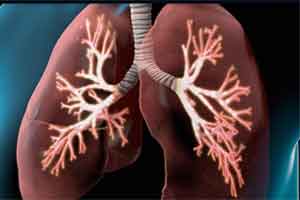- Home
- Editorial
- News
- Practice Guidelines
- Anesthesiology Guidelines
- Cancer Guidelines
- Cardiac Sciences Guidelines
- Critical Care Guidelines
- Dentistry Guidelines
- Dermatology Guidelines
- Diabetes and Endo Guidelines
- Diagnostics Guidelines
- ENT Guidelines
- Featured Practice Guidelines
- Gastroenterology Guidelines
- Geriatrics Guidelines
- Medicine Guidelines
- Nephrology Guidelines
- Neurosciences Guidelines
- Obs and Gynae Guidelines
- Ophthalmology Guidelines
- Orthopaedics Guidelines
- Paediatrics Guidelines
- Psychiatry Guidelines
- Pulmonology Guidelines
- Radiology Guidelines
- Surgery Guidelines
- Urology Guidelines
COPD patients on long-term ICS have increased risk of bone fractures

According to a new study conducted by Researchers from McGill University and the Jewish General Hospital-Lady Davis Research Institute, long-term inhaled corticosteroids (ICS) in patients with COPD increase risk of bone fractures in both men and women. Studies in past suggested that ICS negatively impacts bone mineral density in a dose-dependent fashion, particularly affecting postmenopausal women, but it was unclear whether these effects translate to bone fractures.The study has been published in the February issue of journal CHEST.
The researchers used a population-based cohort of patients with COPD, aged 55 or older, that was followed for the occurrence of a hip or upper extremity fracture and found that long-term ICS exposure at high doses was associated with modest but significant increase in the risk of hip or upper extremity fractures.
Utilizing the Quebec healthcare databases, researchers formed a cohort of patients with COPD over 1990-2005, followed until 2007 for hip and upper extremity fractures. In addition, a nested case-control analysis was conducted in which each case of fracture was matched with 20 control subjects including: age, sex and follow-up time. The adjusted rate ratio of fracture with ICS usage was estimated using the conditional logistic regression with an interaction term to compare the risk in men and women.
Results showed that of the 240,110 patients with COPD in the cohort, 19,396 sustained a fracture during a mean 5.3 years (at a rate of 15.2 per 1,000 per year). The fracture rate was increased for those who used ICS longer than four years at daily doses of 1,000 mcg or more, equally so for male and female COPD patients.
"Since fractures are more frequent in women than men, our study suggests that the excess number of fractures associated with ICS will be greater in women even though we did not find that the risk increase was particularly higher in women than in men," said Dr. Samy Suissa, lead researcher. "Quantifying this excess number would require a larger cohort."

Disclaimer: This site is primarily intended for healthcare professionals. Any content/information on this website does not replace the advice of medical and/or health professionals and should not be construed as medical/diagnostic advice/endorsement or prescription. Use of this site is subject to our terms of use, privacy policy, advertisement policy. © 2020 Minerva Medical Treatment Pvt Ltd